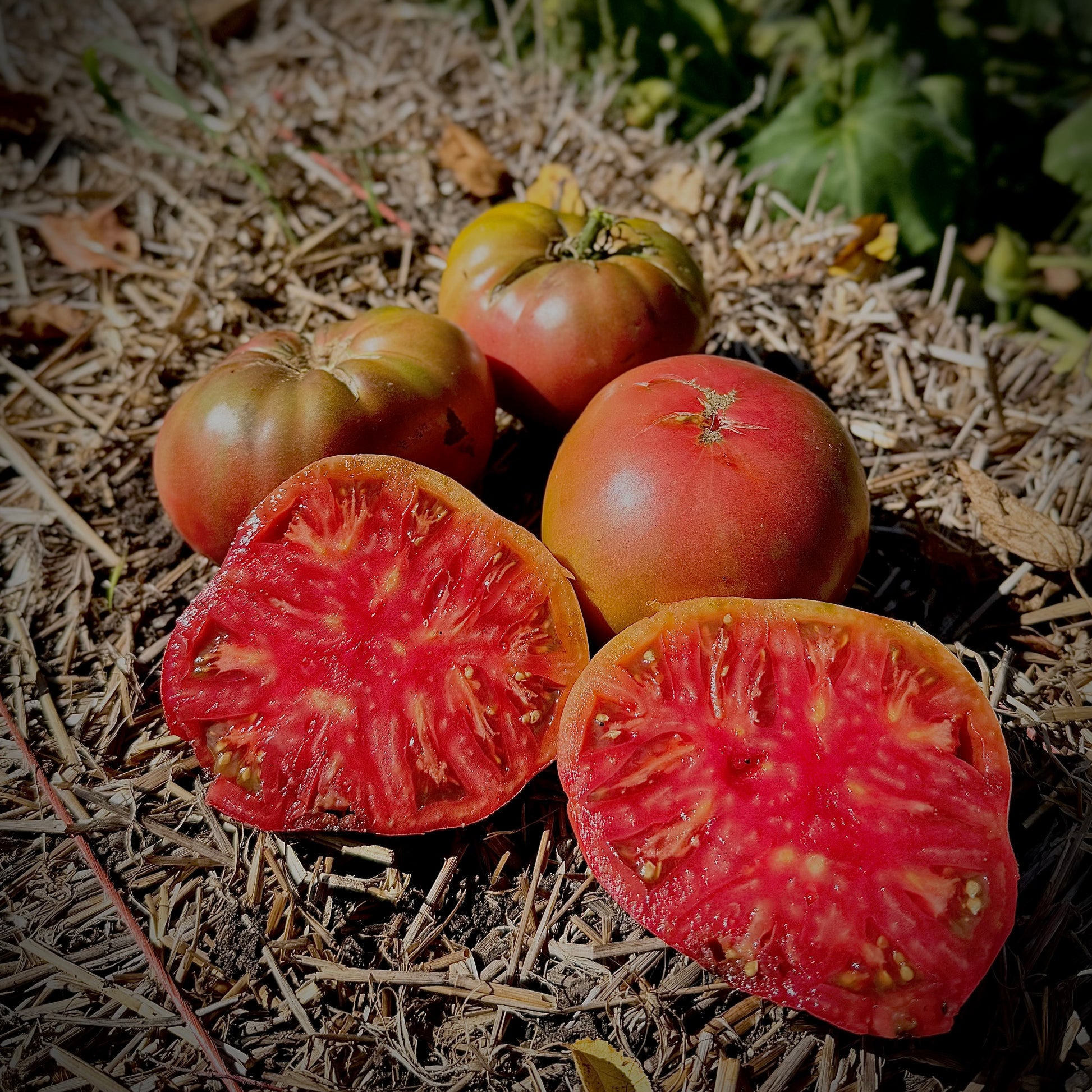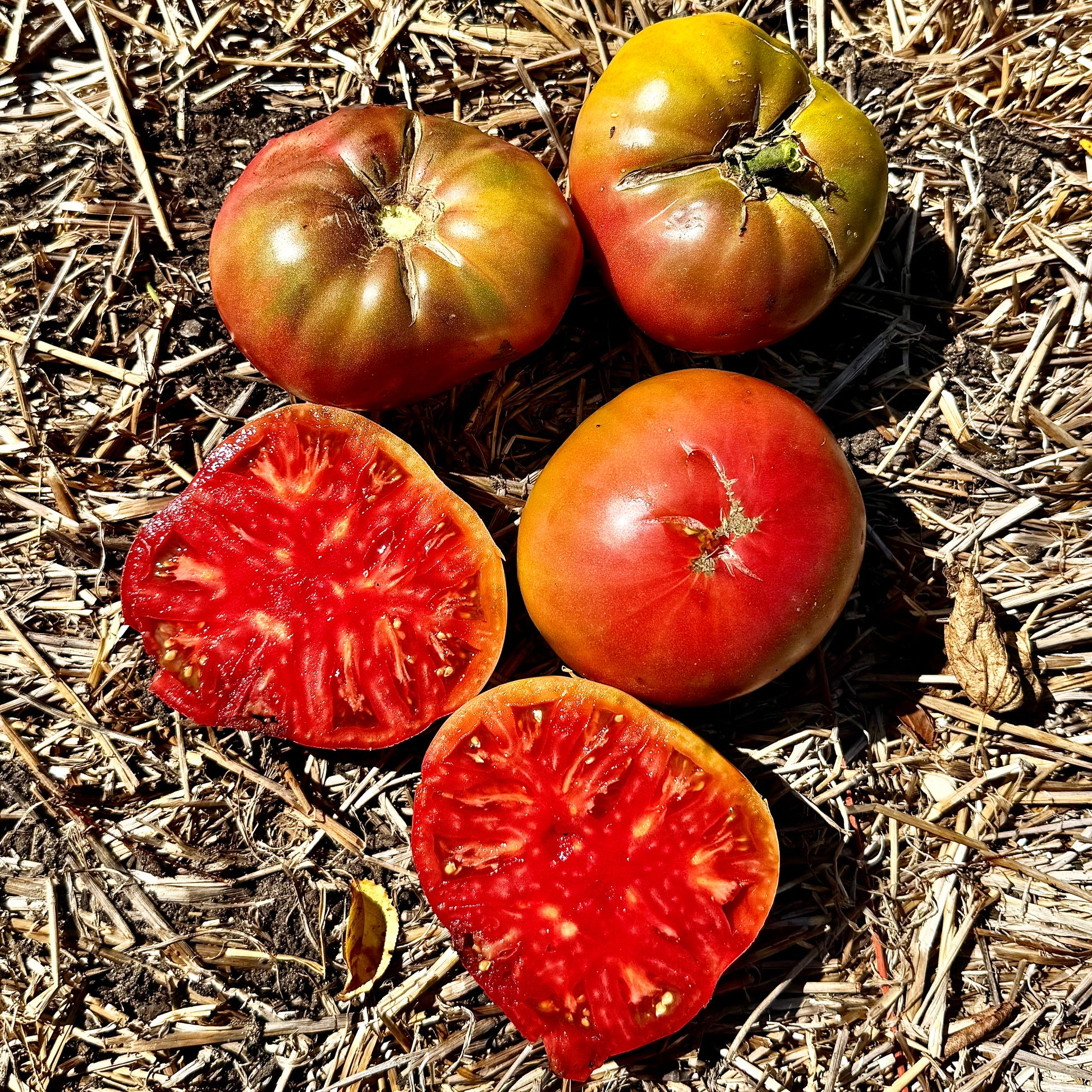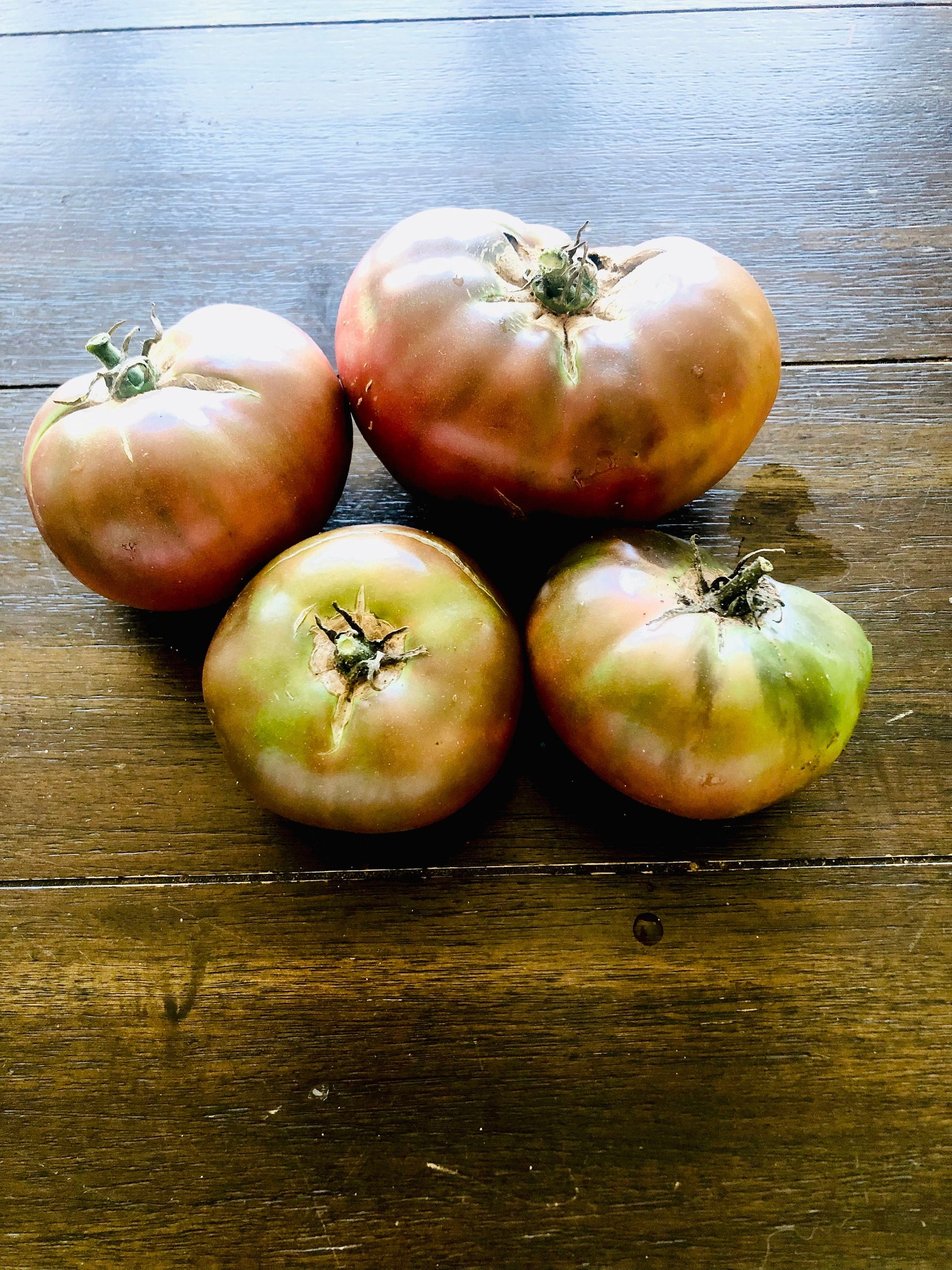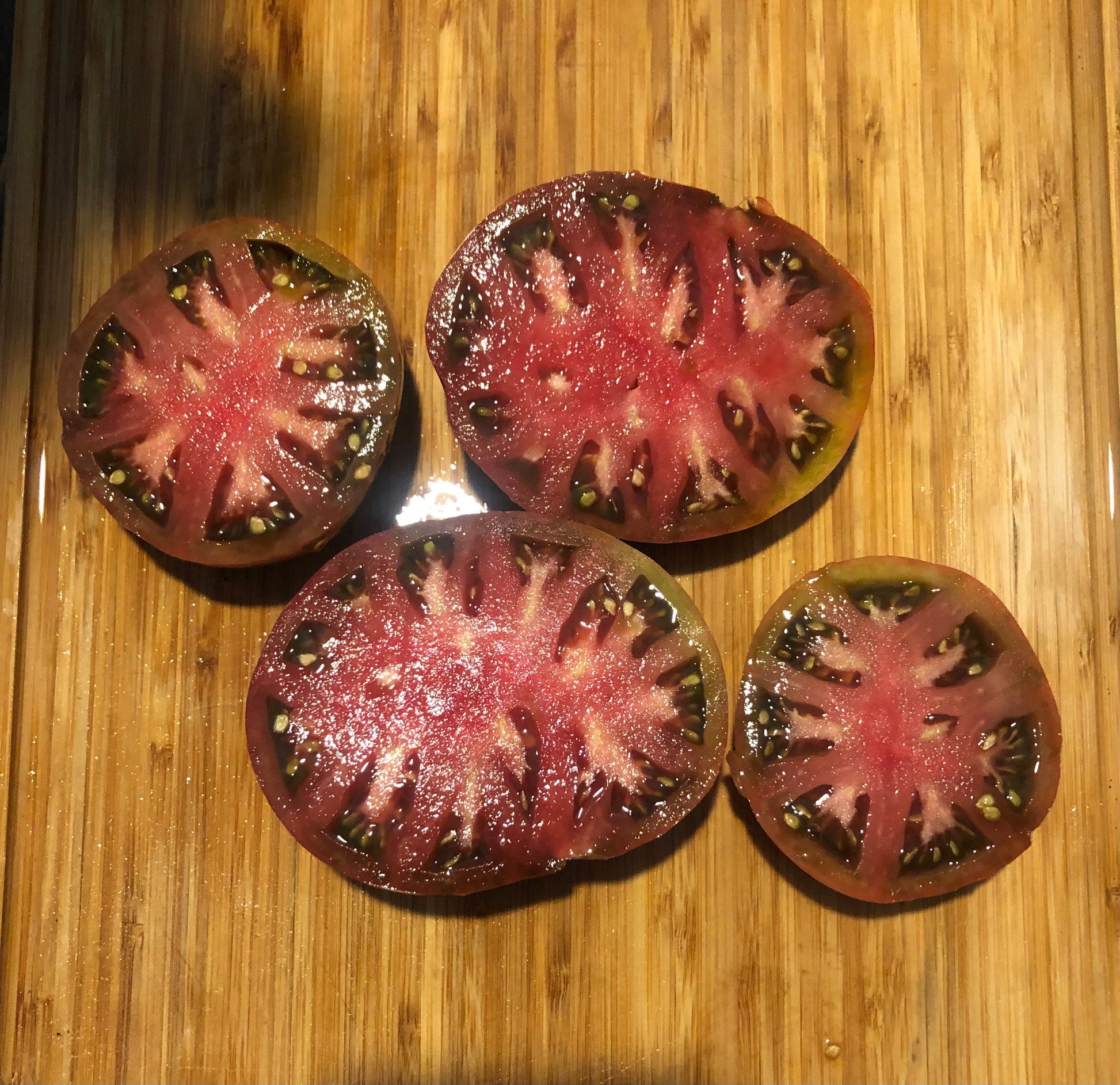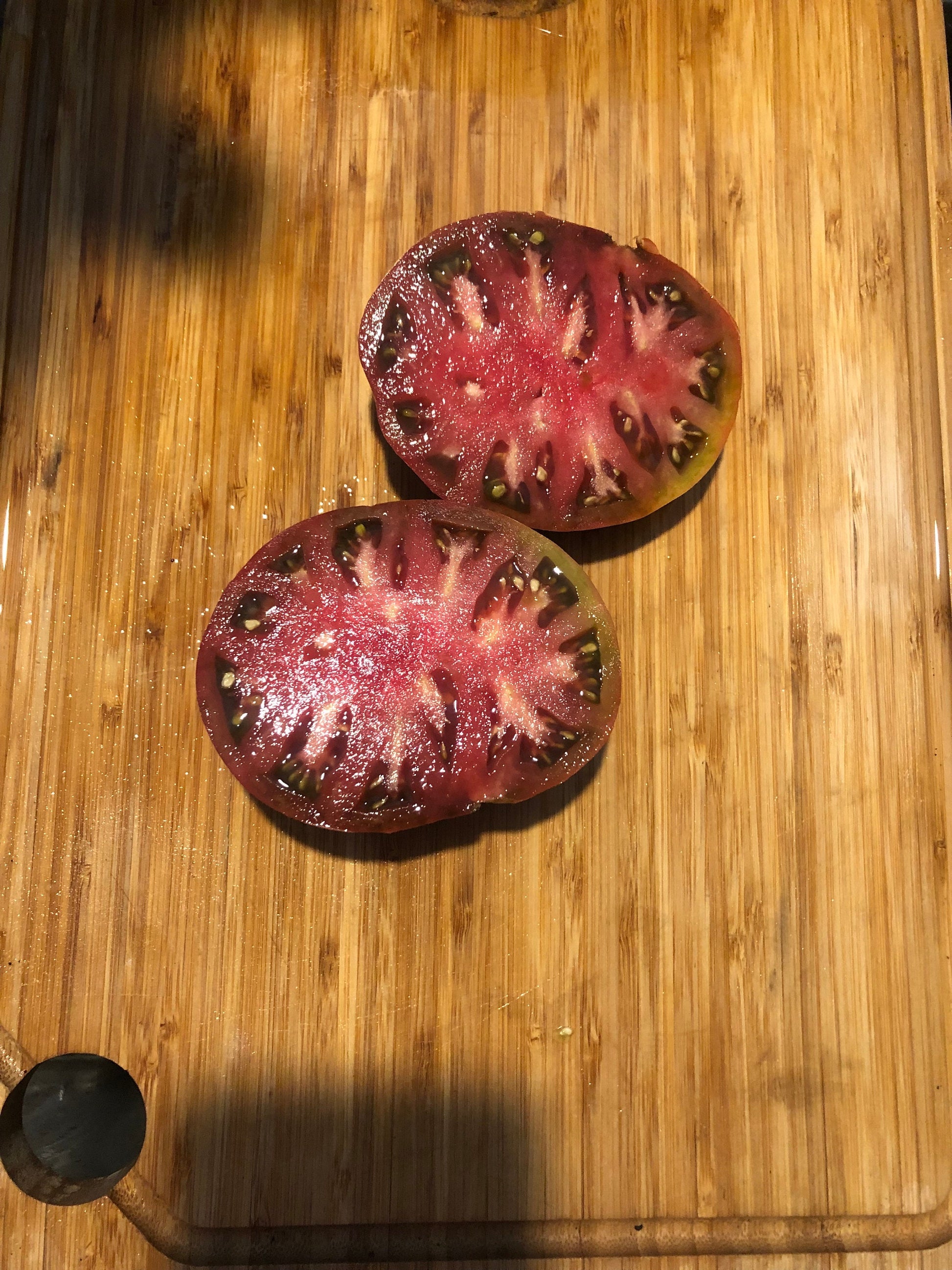Tomato - Cherokee Purple
Tomato - Cherokee Purple
5.0 / 5.0
(1) 1 total reviews
Couldn't load pickup availability
Minimum Seed Count: 15
The Cherokee Purple tomato is a beloved heirloom variety known for its deep, dusky rose to purple-brown skin and rich, complex flavor. It produces medium to large, beefsteak-type fruits that often weigh between 10–16 ounces. The flesh is a unique mix of brick red and purple with green shoulders, giving it a marbled, almost smoky look when sliced.
Flavor-wise, Cherokee Purple is prized for its balance of sweetness and acidity with earthy undertones, often described as having a rich, old-fashioned tomato taste. The plants are indeterminate, meaning they’ll keep producing fruit throughout the season until frost.
This variety traces its roots back to the Cherokee people of Tennessee, making it not only delicious but also historically significant. It’s a favorite for fresh eating, slicing onto sandwiches, or serving in summer salads where its unique color and flavor can truly shine.
🌱 Planting Guide: Cherokee Purple Tomato
1. Starting Seeds
-
When to Start Indoors: 6–8 weeks before your last expected spring frost.
-
Soil Temp for Germination: 70–80°F (21–27°C).
-
Depth: Sow seeds about ¼ inch deep in a light, well-draining seed-starting mix.
-
Light: Provide strong grow lights or a sunny windowsill—tomato seedlings need 14–16 hours of light daily.
2. Transplanting Outdoors
-
When: After all danger of frost has passed and nighttime temps are consistently above 55°F (13°C).
-
Hardening Off: Gradually acclimate seedlings to outdoor conditions over 7–10 days.
-
Spacing: 24–36 inches apart in rows 3–4 feet apart.
-
Planting Depth: Bury seedlings deep, covering the stem up to the first true leaves to encourage strong root growth.
3. Growing Conditions
-
Sun: Full sun (at least 6–8 hours daily).
-
Soil: Rich, well-drained loam with lots of organic matter. pH 6.2–6.8 is ideal.
-
Watering: Keep soil consistently moist but not waterlogged; deep watering is better than frequent shallow watering. Mulch helps retain moisture and prevents soil splash.
-
Support: Plants are indeterminate, so provide sturdy cages, trellises, or stakes early on.
4. Care Throughout the Season
-
Feeding: Fertilize with a balanced or tomato-specific fertilizer after transplanting, then side-dress with compost or fertilizer every 3–4 weeks.
-
Pruning: Remove suckers (optional) to improve airflow and encourage larger fruits.
-
Pests/Diseases: Watch for tomato hornworms, aphids, and early blight. Rotate crops yearly and avoid overhead watering to reduce disease risk.
5. Harvesting
-
Days to Maturity: About 75–85 days from transplant.
-
When to Pick: Fruits should be a dusky rose-purple with slight green shoulders. They’ll feel slightly soft to the touch when ripe.
-
Flavor Tip: Allow them to fully ripen on the vine for the richest taste.
Share
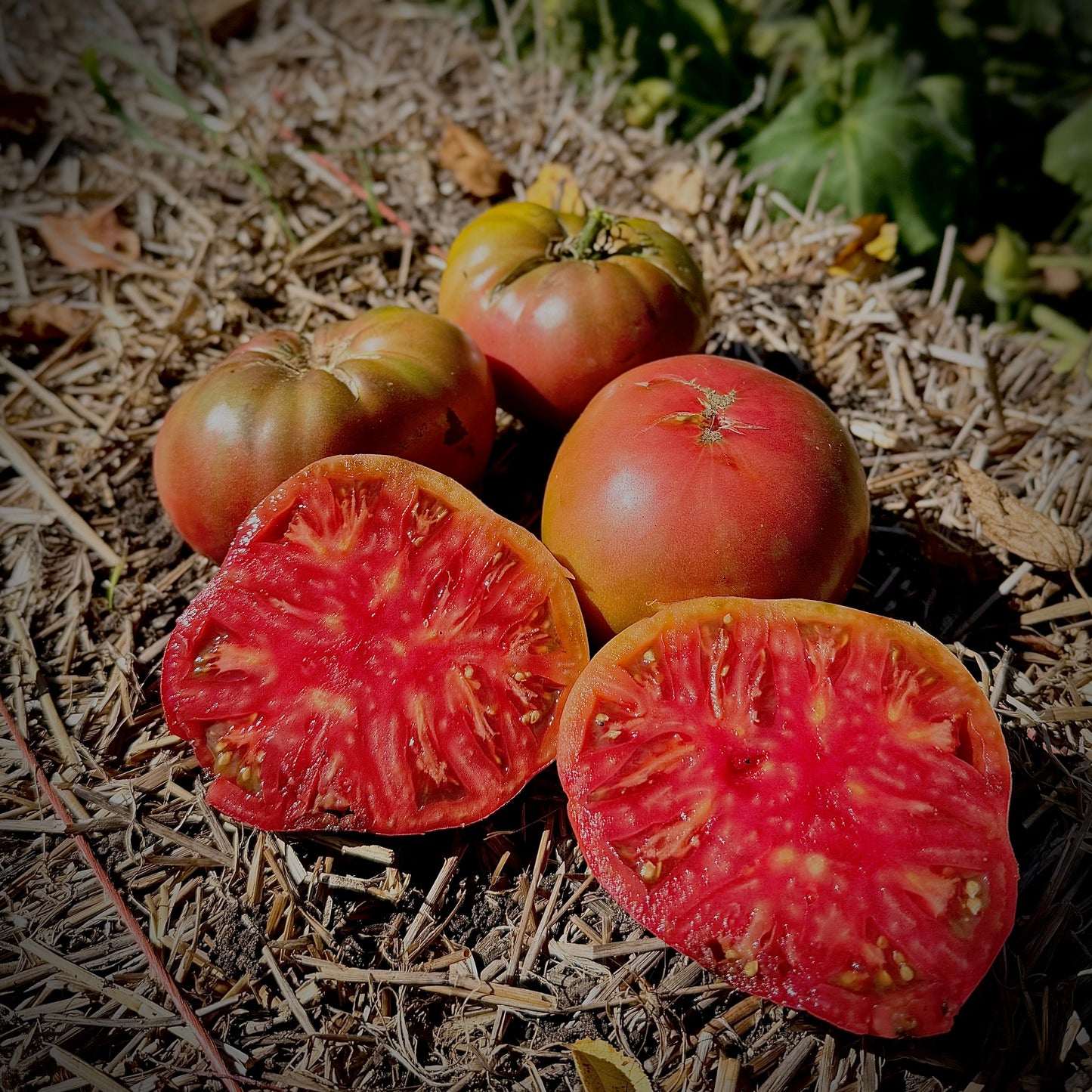
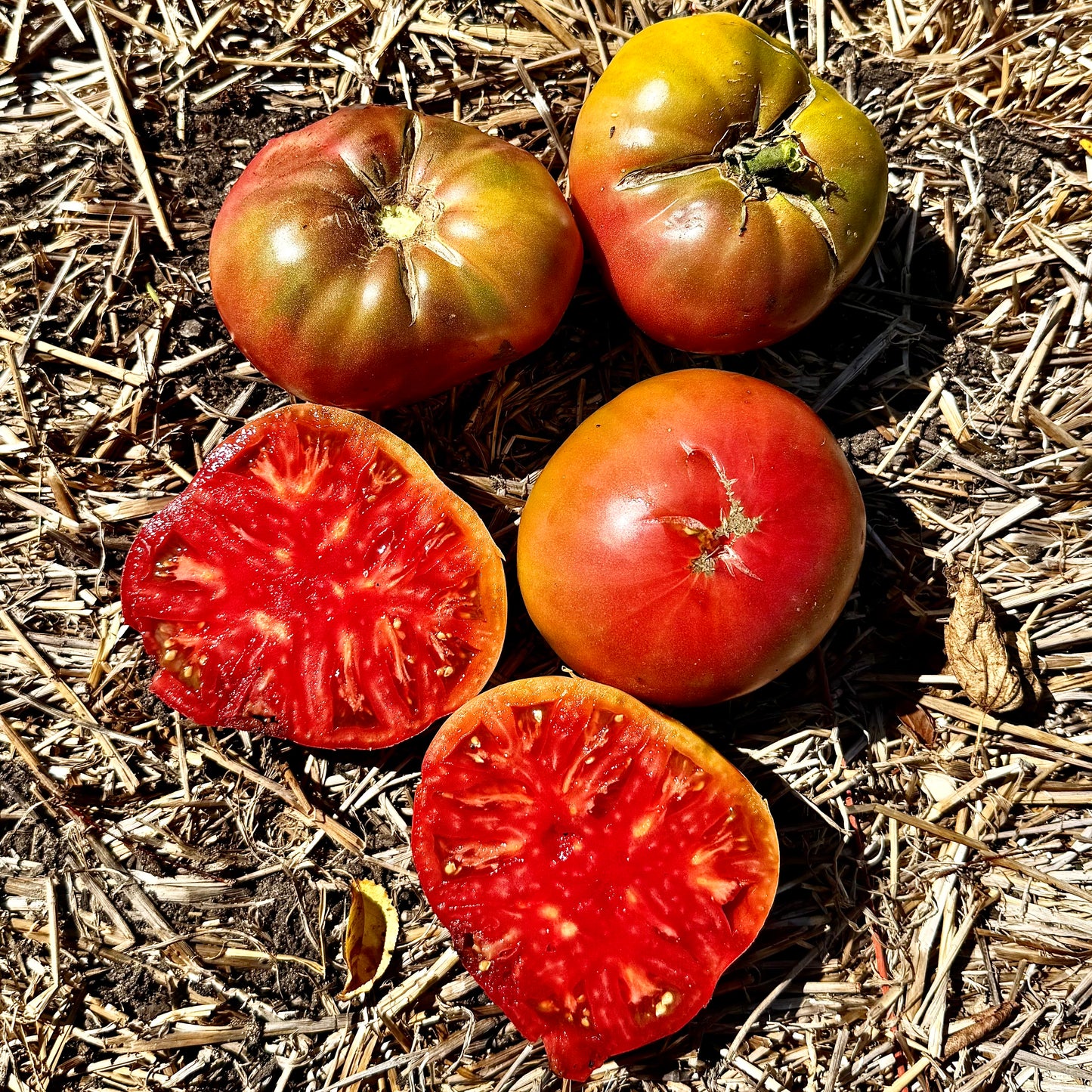
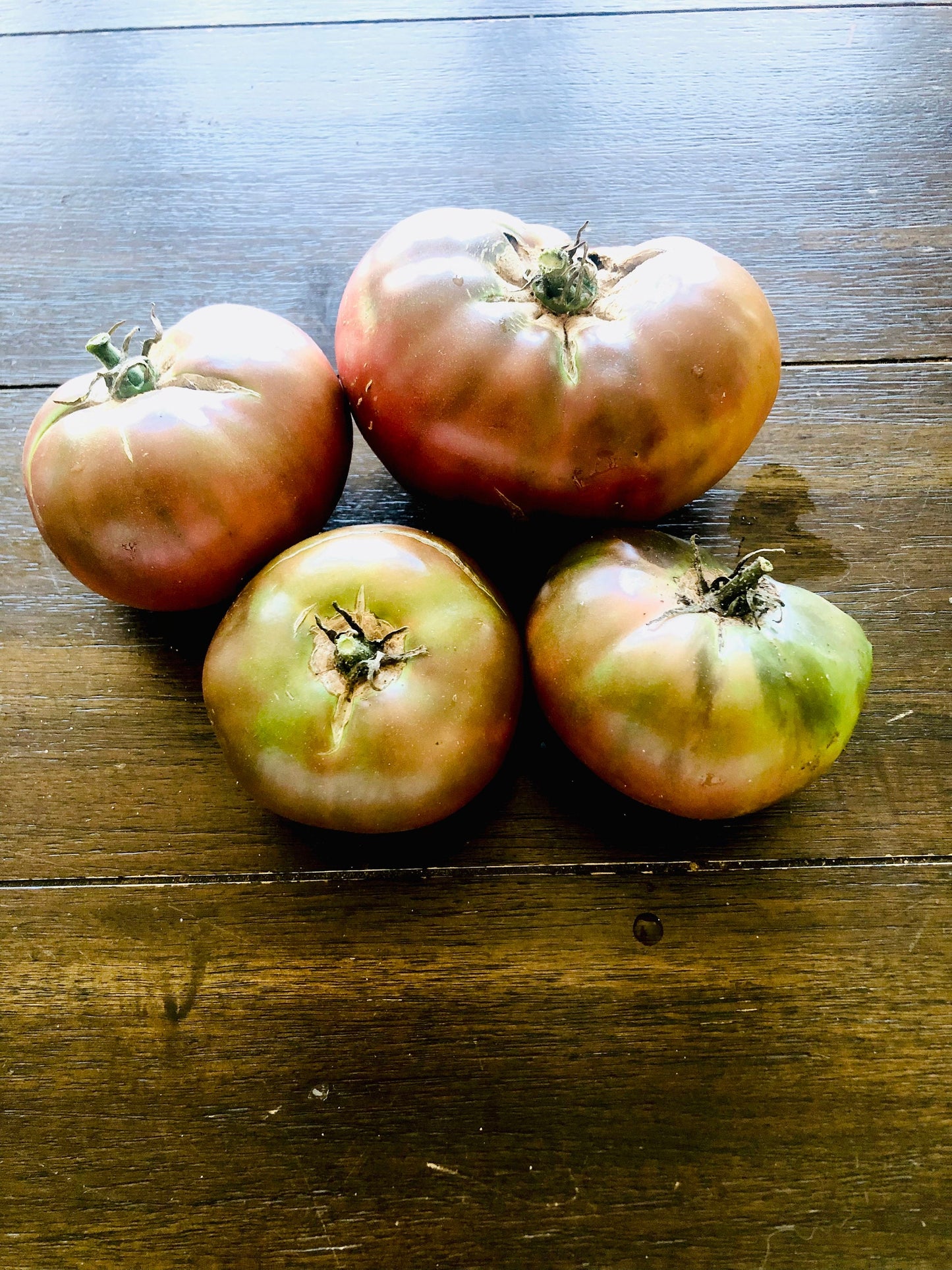
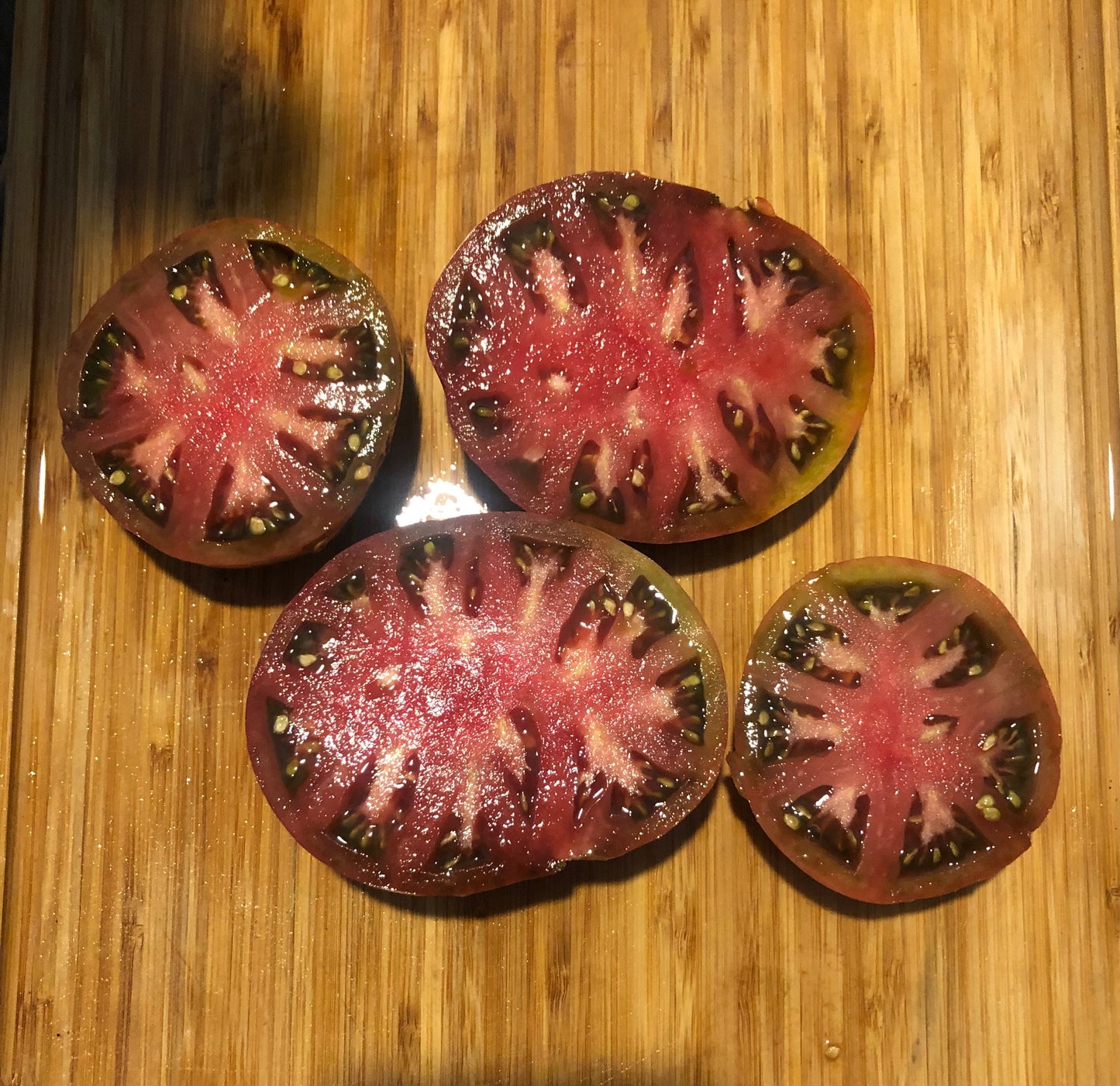
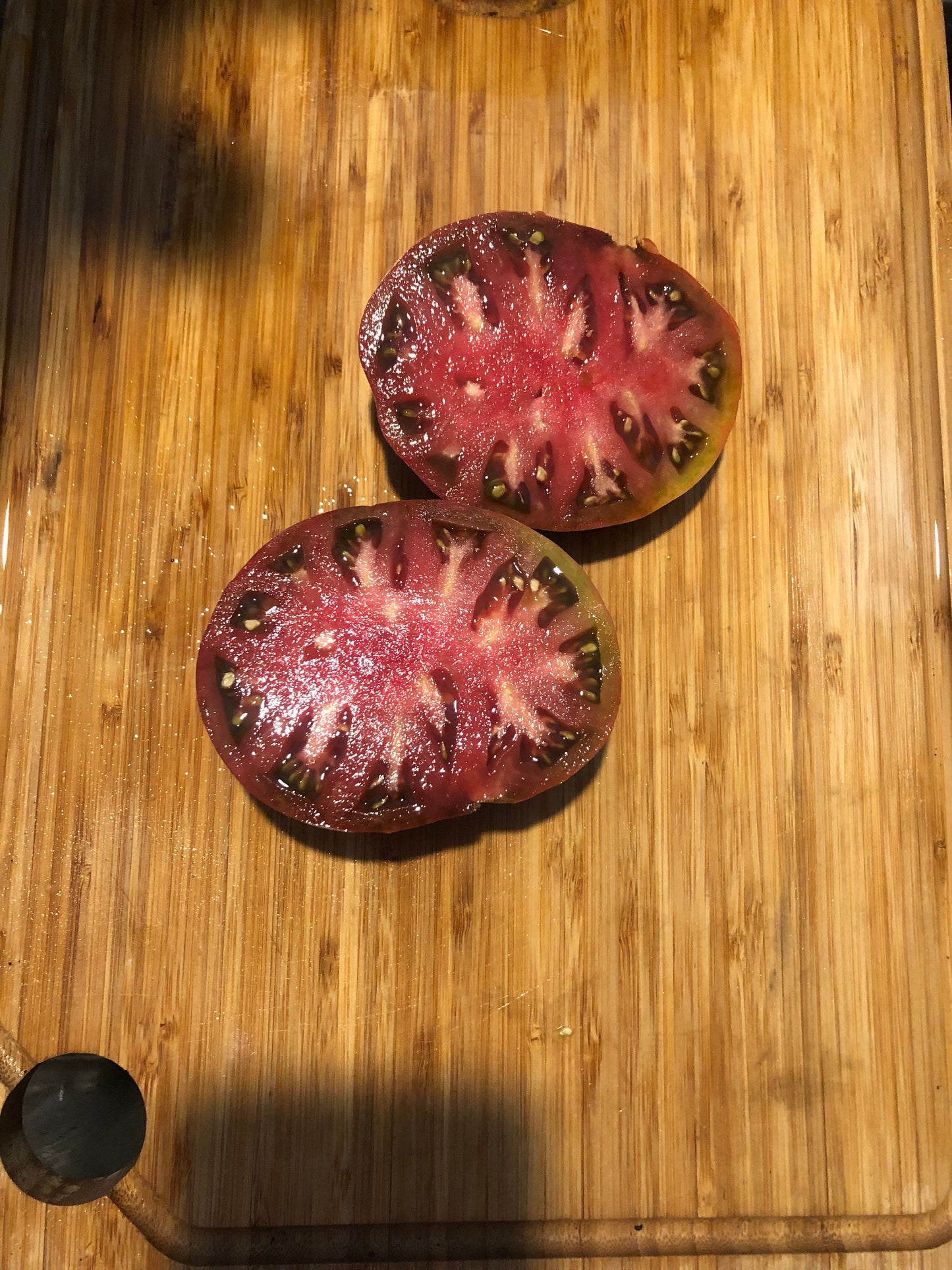
Everything was well packaged and arrived as expected

